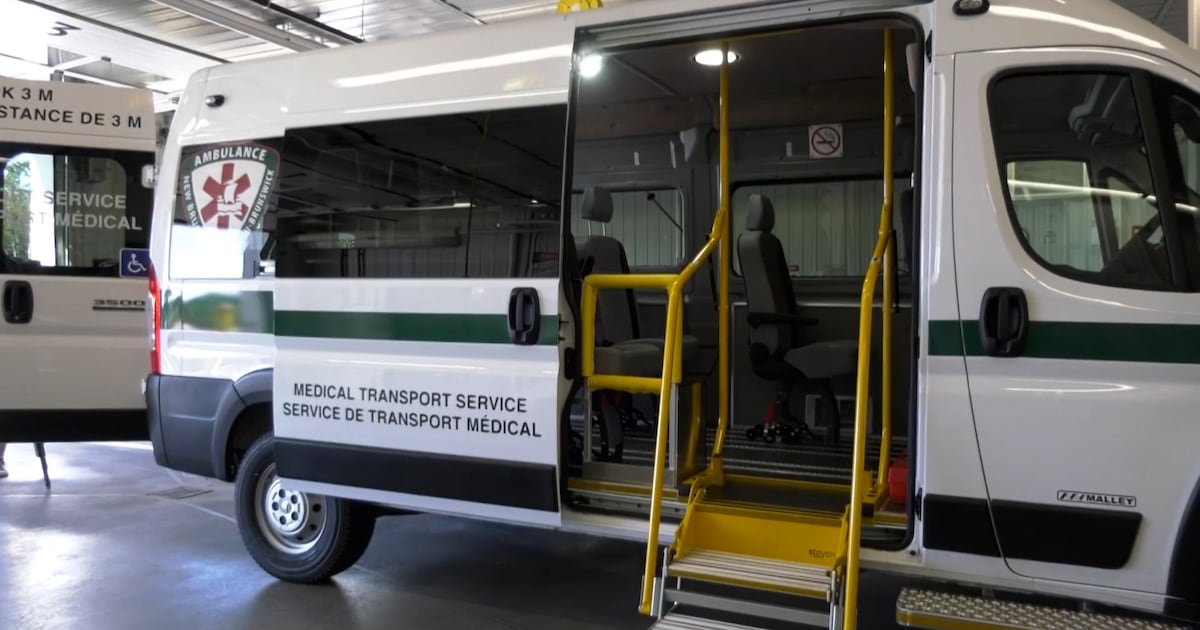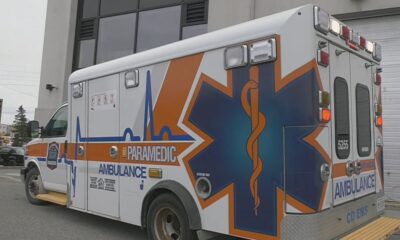Health
Multi-Patient Transfer Units Underutilized in New Brunswick

New Brunswick’s introduction of multi-patient transfer units (MTS) in August 2023 was intended to alleviate pressures on the healthcare system by freeing up ambulance resources. However, these vehicles have largely remained unused, according to Chris Hood, executive director of the Paramedic Association of New Brunswick. He stated that staffing challenges have hindered their deployment, emphasizing, “That’s why they haven’t moved is because there’s nobody sitting in those vehicles to do the work.”
The MTS units, designed to transport up to four patients for non-urgent, low-acuity transfers, were launched by former Health Minister Bruce Fitch. They handle cases such as transporting nursing home residents to hospital appointments or transferring patients between hospitals. Fitch noted that around 50 percent of ambulance transfers were non-urgent and could be managed by MTS vehicles.
Despite this potential, data indicates a stark discrepancy in usage. In their first full year of operation, the MTS unit in the southern region conducted only four transfers, while the unit in the west, which includes Fredericton, made 28. In contrast, the Moncton region’s MTS unit recorded an impressive 607 transfers, primarily because it is the only vehicle capable of transferring patients on stretchers.
The trend continues into 2025, with the southern MTS unit managing just two transfers in the first six months and the western unit completing 11, while Moncton’s unit facilitated 247 transfers. Hood pointed out that such numbers reflect the capacity of these vehicles when adequately staffed. “I think it’s a symptom of the bigger problem – the problem of staffing overall in the system,” he said.
Hood highlighted a concerning situation from the summer of 2024, when the ambulance system faced staffing shortages with approximately 57 vehicles unstaffed on a single August weekend. Typically, the system operates between 80 and 90 staffed vehicles. The workforce comprises about 1,300 to 1,350 emergency medical technicians (EMTs) and paramedics, with roughly 90 percent being primary care paramedics.
Efforts to address these staffing issues have been initiated, including a significant investment of $6.5 million by the Susan Holt government. This funding aims to support the training of paramedics and EMTs who agree to a return-of-service contract with Ambulance NB.
Data from Medavie Health Services New Brunswick reveals that the majority of non-urgent transfers are being handled by patient transport units (PTUs), which are fully stocked ambulances operated by primary care paramedics and EMTs. In 2024, PTUs completed 20,297 non-urgent transfers out of a total of 24,136 transfers across the province.
While the MTS units were conceived as a solution to enhance the efficiency of patient transport, their underutilization raises questions about the broader challenges facing the healthcare system in New Brunswick. The success of these units depends on addressing staffing shortages and ensuring that resources are allocated effectively to meet non-urgent patient transport needs.
-

 Politics4 weeks ago
Politics4 weeks agoSecwepemc First Nation Seeks Aboriginal Title Over Kamloops Area
-

 World5 months ago
World5 months agoScientists Unearth Ancient Antarctic Ice to Unlock Climate Secrets
-

 Entertainment5 months ago
Entertainment5 months agoTrump and McCormick to Announce $70 Billion Energy Investments
-

 Science5 months ago
Science5 months agoFour Astronauts Return to Earth After International Space Station Mission
-

 Lifestyle5 months ago
Lifestyle5 months agoTransLink Launches Food Truck Program to Boost Revenue in Vancouver
-

 Technology3 months ago
Technology3 months agoApple Notes Enhances Functionality with Markdown Support in macOS 26
-

 Lifestyle3 months ago
Lifestyle3 months agoManitoba’s Burger Champion Shines Again Amid Dining Innovations
-

 Top Stories2 months ago
Top Stories2 months agoUrgent Update: Fatal Crash on Highway 99 Claims Life of Pitt Meadows Man
-

 Politics4 months ago
Politics4 months agoUkrainian Tennis Star Elina Svitolina Faces Death Threats Online
-

 Sports5 months ago
Sports5 months agoSearch Underway for Missing Hunter Amid Hokkaido Bear Emergency
-

 Politics5 months ago
Politics5 months agoCarney Engages First Nations Leaders at Development Law Summit
-

 Technology5 months ago
Technology5 months agoFrosthaven Launches Early Access on July 31, 2025




















